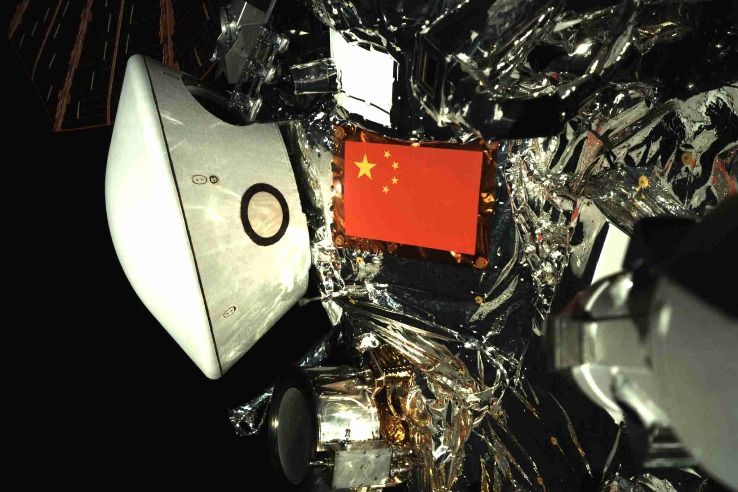China's Tianwen 2: The Race to Collect Asteroid Samples Begins! 🚀











2025-10-01T00:40:00Z

Can you imagine a spacecraft traveling millions of kilometers, all for the sake of unraveling the mysteries of our solar system? Well, that’s exactly what China's Tianwen 2 is doing as it continues its ambitious interplanetary mission!
After launching on May 29, this remarkable robotic probe has journeyed over 43 million kilometers in just four months. Currently, it’s en route to a near-Earth asteroid named 2016 HO3—a small, enigmatic cosmic body measuring between 40 to 100 meters wide. Now, it lies about 45 million kilometers from this intriguing destination, and the China National Space Administration (CNSA) has assured us that the probe is in excellent condition as it travels through the vastness of space.
In a recent update, the CNSA shared an exciting image captured by the spacecraft's monitor camera—a selfie showcasing the Tianwen 2 proudly displaying the Chinese flag, with our beautiful Earth appearing as a tiny speck in the background.
This pioneering mission marks China’s first attempt to collect pristine asteroid samples and bring them back to Earth. With a grand goal set for the summer of 2026, the Tianwen 2 will not only study the surface of 2016 HO3 using a suite of 11 advanced instruments—ranging from cameras to spectrometers—but also deploy specialized devices to collect surface samples that could revolutionize our understanding of asteroids and, by extension, the early solar system.
Interestingly, 2016 HO3, also known as 469219 Kamo'oalewa, is a quasi-satellite of Earth. It orbits the sun in a manner that keeps it in close proximity to our planet, making it a unique cosmic companion, albeit not a true satellite.
Once the samples are gathered, Tianwen 2 will embark on its return journey to Earth, where a capsule will be deployed to bring these precious materials home. Scientists eagerly anticipate studying the samples, analyzing their physical and chemical properties, and uncovering the secrets they hold about the solar system's formation and evolution.
But the adventure doesn’t stop there! After delivering the asteroid samples, Tianwen 2 will enter a new phase, setting its sights on a main-belt comet known as 311P. It will conduct a remote-sensing survey and send back invaluable data for further scientific research, as highlighted by the CNSA. This ambitious mission promises to yield groundbreaking discoveries that could deepen our understanding of not only Earth but also the small celestial bodies inhabiting our solar system.
 Thomas Fischer
Thomas Fischer
Source of the news: China Daily